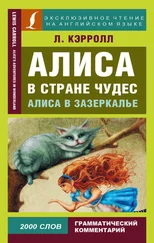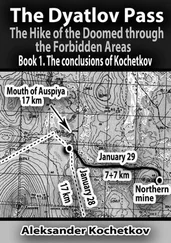Edward Sapir, like Humboldt a century before him, started his linguistic career far from the open vistas of American languages. His studies at Columbia concentrated on Germanic philology and consisted of things rather reminiscent of the pedantic collections of obscure verbal forms in ancient tongues that he derided in the passage I quoted earlier. Sapir credited his conversion from the dusty armchair of Germanic philology to the great outdoors of Indian languages to the influence of Franz Boas, the charismatic professor of anthropology at Columbia who was also the pioneer in the scientific study of the native languages of the continent. Years later, Sapir reminisced about a life-changing meeting at which Boas summoned counterexamples from this, that, or the other Indian tongue to every generalization about the structure of language that Sapir had previously believed in. Sapir began to feel that Germanic philology had taught him very little and that he still had “everything to learn about language.” Henceforth, he was to apply his legendary sharpness of mind to the study of Chinook, Navajo, Nootka, Yana, Tlingit, Sarcee, Kutchin, Ingalik, Hupa, Paiute, and other native languages, producing analyses of unmatched clarity and depth.
In addition to the exhilaration of discovering weird and exotic grammars, there was something else in the air that pushed Sapir toward the formulation of his linguistic relativity principle. This was the radical trend in the philosophy of the early twentieth century. At the time, philosophers such as Bertrand Russell and Ludwig Wittgenstein were busy decrying the pernicious influences of language on the metaphysics of the past. Russell wrote in 1924: “Language misleads us both by its vocabulary and by its syntax. We must be on our guard in both respects if our logic is not to lead to a false metaphysic.”

Edward Sapir, 1884-1939
Sapir translated the claims about language’s influence on philosophical ideas into an argument about the influence of the mother tongue on everyday thoughts and perceptions. He started talking about the “tyrannical hold that linguistic form has upon our orientation in the world,” and as opposed to anyone before him, he went on to inject such slogans with actual content. In 1931 he advanced the following example for how one specific linguistic difference should affect speakers’ thoughts. When we observe a stone moving through space toward the earth, Sapir explained, we involuntarily divide this event into two separate concepts: a stone and the action of falling, and we declare that “the stone falls.” We assume that this is the only way to describe such an event. But the inevitability of the division into “stone” and “fall” is just an illusion, because the Nootka language, which is spoken on Vancouver Island, does things in a very different way. There is no verb in Nootka that corresponds to our general verb “fall” and that can describe the action independently of a specific falling object. Instead, a special verb, “to stone,” is used to refer to the motion of a stone in particular. To describe the event of a stone falling , this verb is combined with the element “down.” So the state of affairs that we break up into “stone” and “fall” is described in Nootka as something like “[it] stones down.”
Such concrete examples of “incommensurable analysis of experience in different languages,” Sapir says, “make very real to us a kind of relativity that is generally hidden from us by our naïve acceptance of fixed habits of speech… This is the relativity of concepts or, as it might be called, the relativity of the form of thought.” This type of relativity, he adds, may be easier to grasp than Einstein’s, but to understand it one needs the comparative data of linguistics.
Unfortunately for Sapir, it is exactly by forsaking the cozy vagueness of philosophical slogans and venturing into the freezing drafts of specific linguistic examples that he exposes the thin ice on which his theory stands. The Nootka expression “it stones down” is undoubtedly a very different way of describing the event, and it certainly sounds strange, but does this strangeness mean that Nootka speakers necessarily have to perceive the event in a different way? Does the fusion of verb and noun in Nootka necessarily imply that Nootka speakers do not have separate images of the action and the object in their minds?
We can test this if we apply Sapir’s argument to a slightly more familiar language. Take the English phrase “it rains.” This construction is actually quite similar to the Nootka “it stones down,” because the action (falling) and the object (water drops) are combined into one verbal concept. But not all languages do it in this way. In my mother tongue, the object and the action are kept apart, and one says something like “rain falls.” So there is a profound difference in the way our languages express the event of raining, but does this mean that you and I have to experience rain in a different way? Do you feel you are prevented by the grammar of your mother tongue from understanding the distinction between the watery substance and the action of falling? Do you find it hard to relate the falling raindrops to other things that fall down? Or are the differences in the way our languages express the idea of “raining” no more than merely differences in grammatical organization?
At the time, no one thought of stumbling over such molehills. The excitement about the-largely factual-strangeness of expression in American Indian languages was somehow taken as sufficient to deduce the-largely fictional-differences in their speakers’ perceptions and thoughts. In fact, the party was just beginning, for onto the stage now steps Sapir’s most creative student, Benjamin Lee Whorf.
Whereas Sapir still kept a few toes on the ground and on the whole was reluctant to spell out the exact form of the alleged tyrannical hold of linguistic categories on the mind, his student Whorf suffered no such qualms. Whorf was to boldly go where no man had gone before, and in a series of ever wilder claims he expounded the power of our mother tongue to influence not just our thoughts and perceptions but even the physics of the cosmos. The grammar of each language, he wrote, “is not merely a reproducing instrument for voicing ideas, but rather is itself the shaper of ideas, the program and guide for the individual’s mental activity, for his analysis of impressions… We dissect nature along lines laid down by our native languages.”
The general structure of Whorf’s arguments was to mention an outlandish grammatical feature and then, with a fateful “hence,” “so,” or “therefore,” to conclude that this feature must result in a very different way of thinking. From the frequent fusion of noun and verb in American Indian languages, for example, Whorf concluded that such languages impose a “monistic view of nature” rather than our “bipolar division of nature.” Here is how he justifies such claims: “Some languages have means of expression in which the separate terms are not so separate as in English but flow together into plastic synthetic creations. Hence such languages, which do not paint the separate-object picture of the universe to the same degree as English and its sister tongues, point toward possible new types of logic and possible new cosmical pictures.”
If you find yourself getting swept away by the prose, just remember the English phrase “it rains,” which combines the raindrops and the action of falling into one “plastic synthetic creation.” Is your “separate-object picture of the universe” affected? Do you and speakers of “rain falls” languages operate under a different type of logic and different cosmical pictures?
Читать дальше












